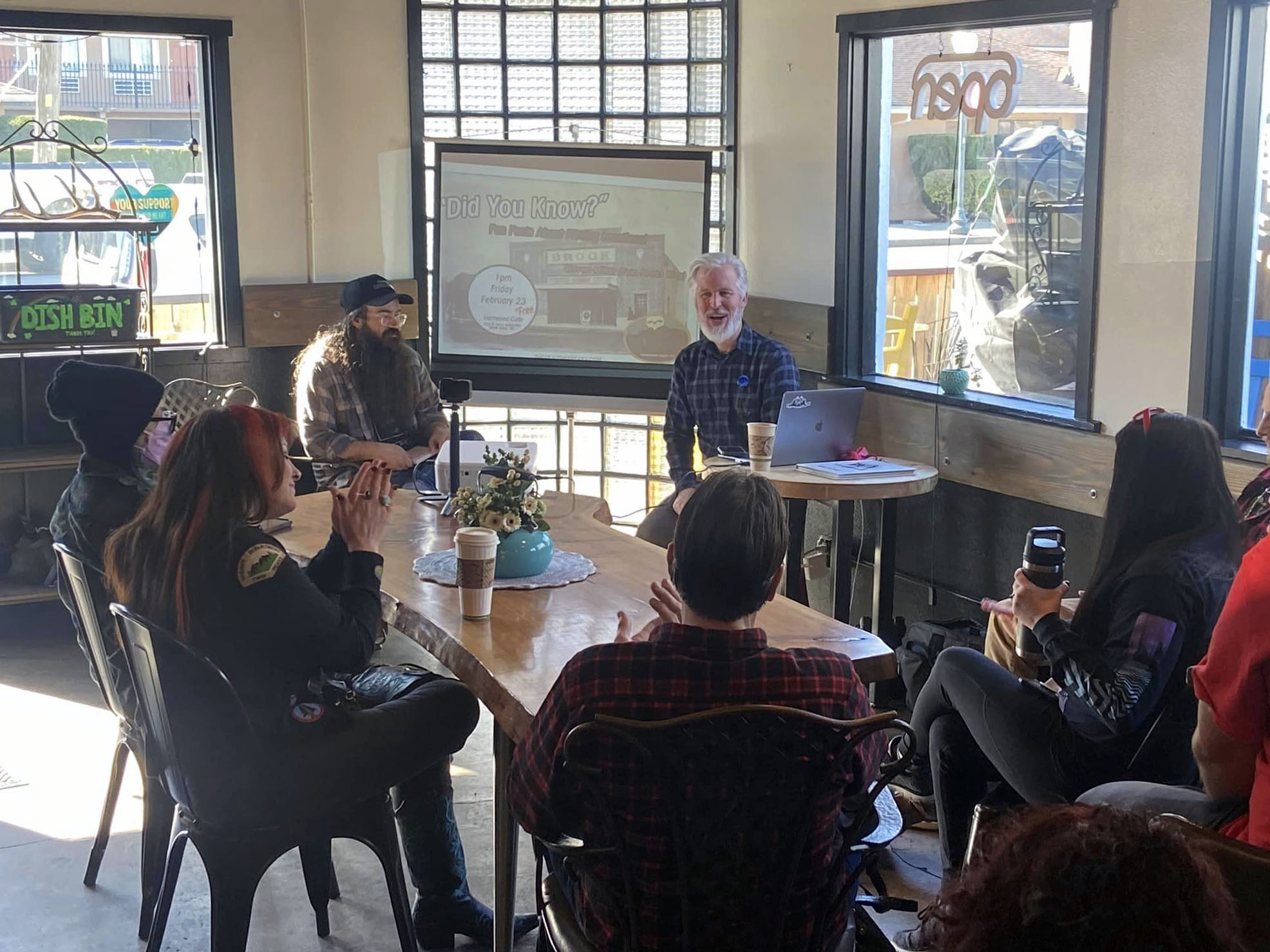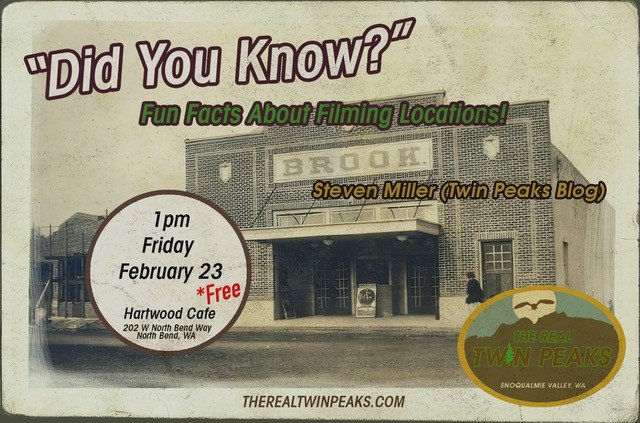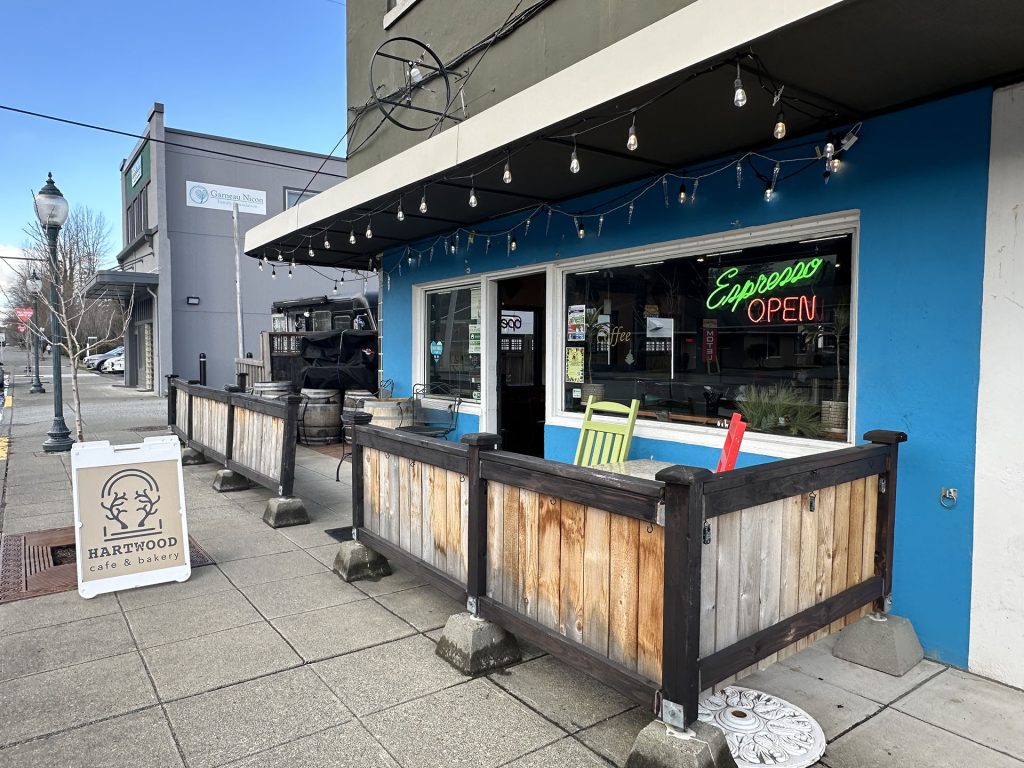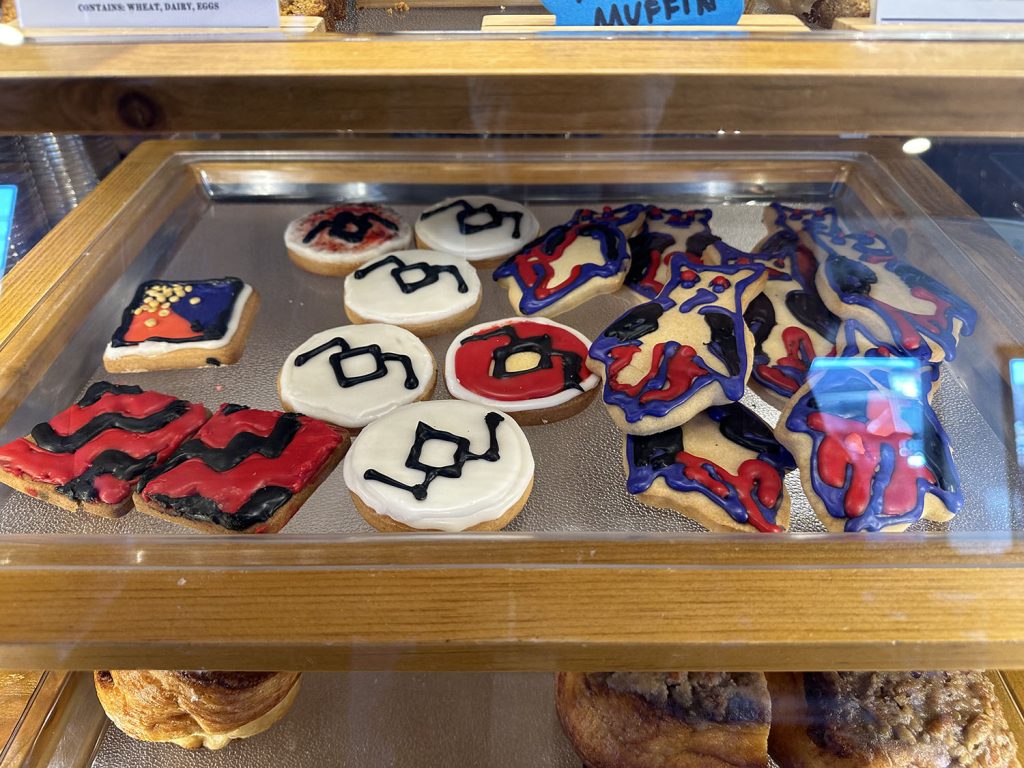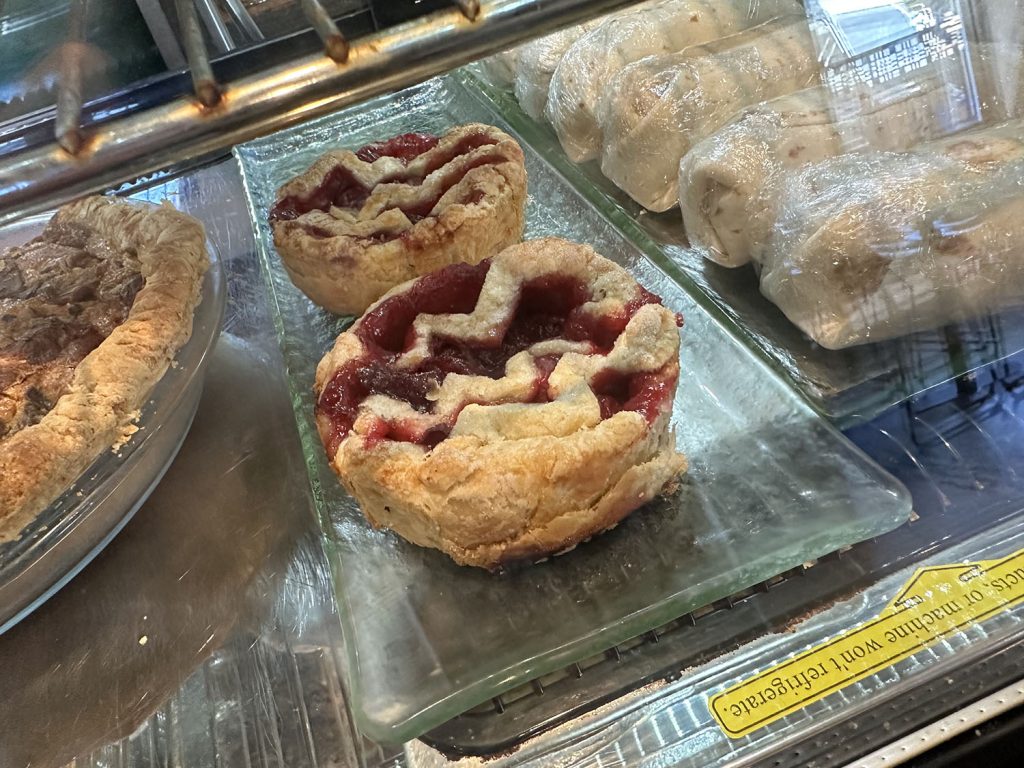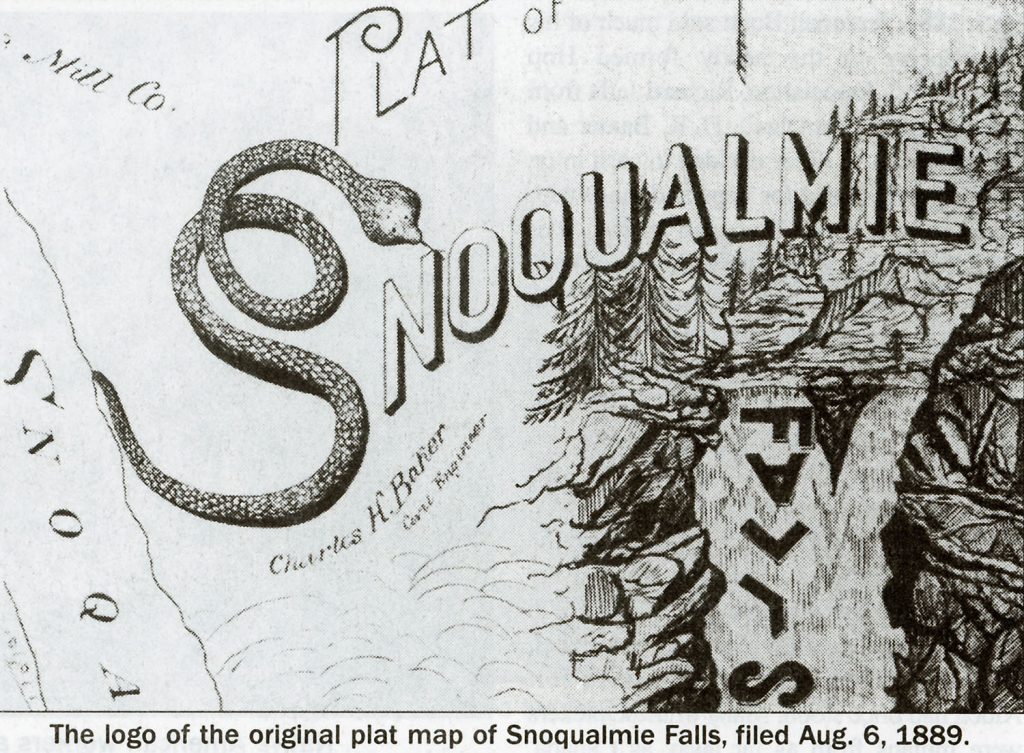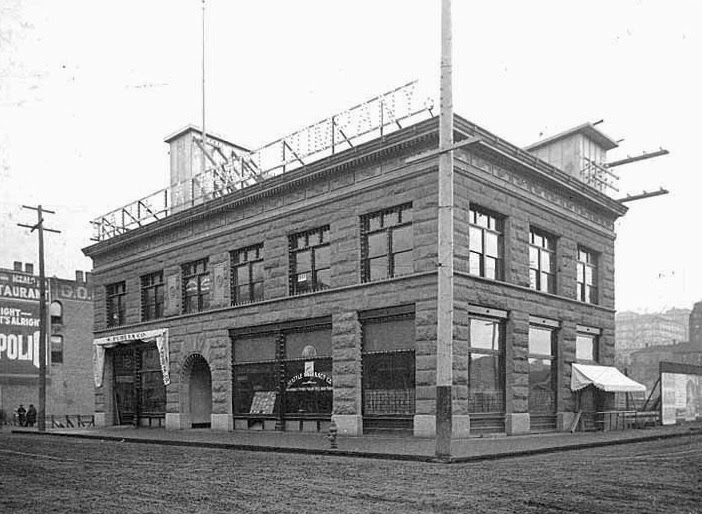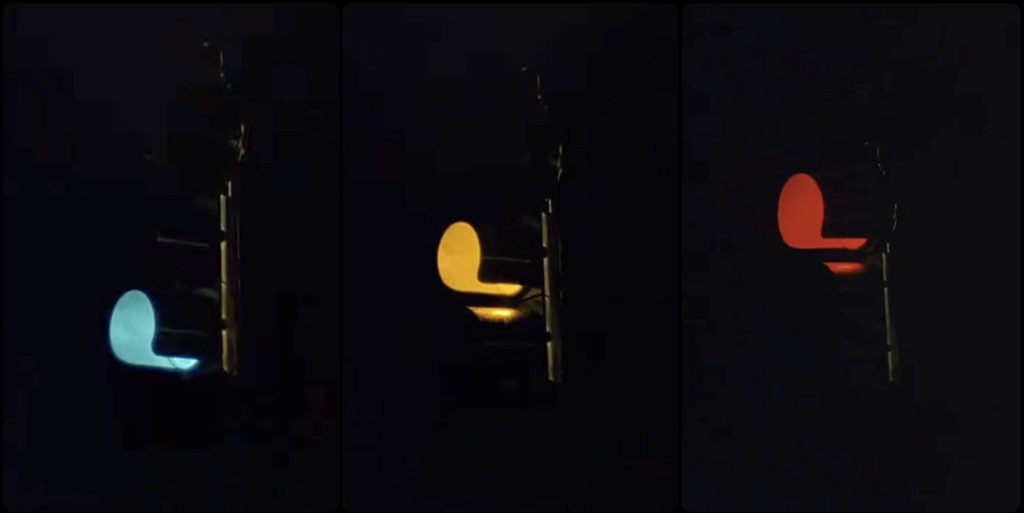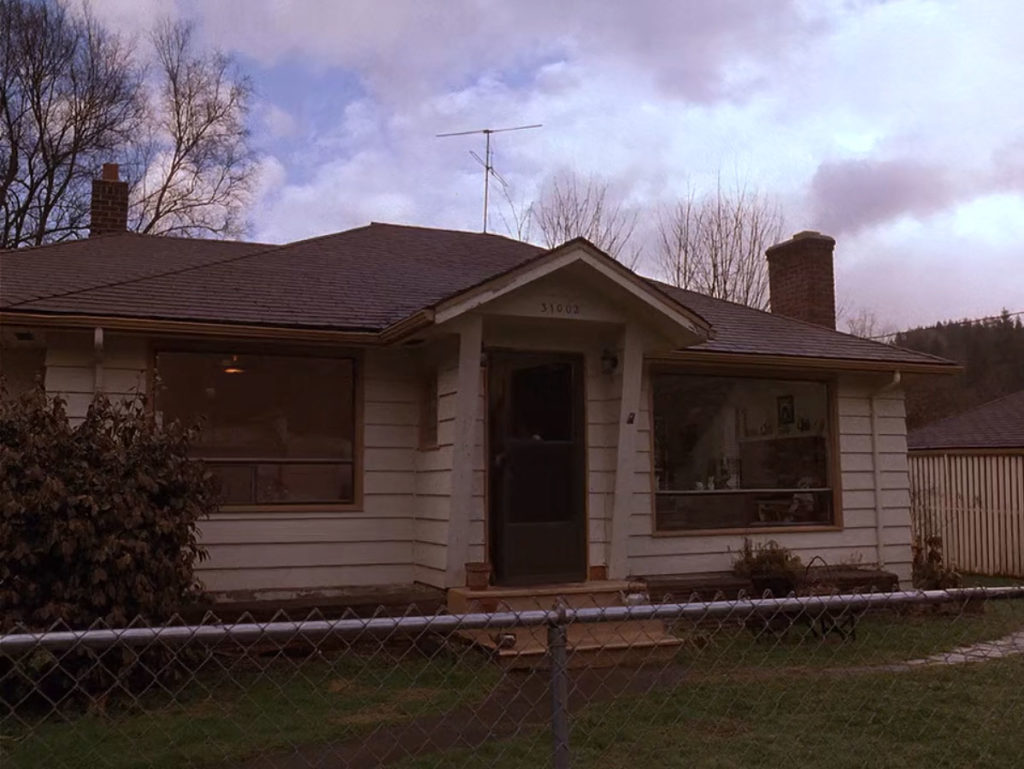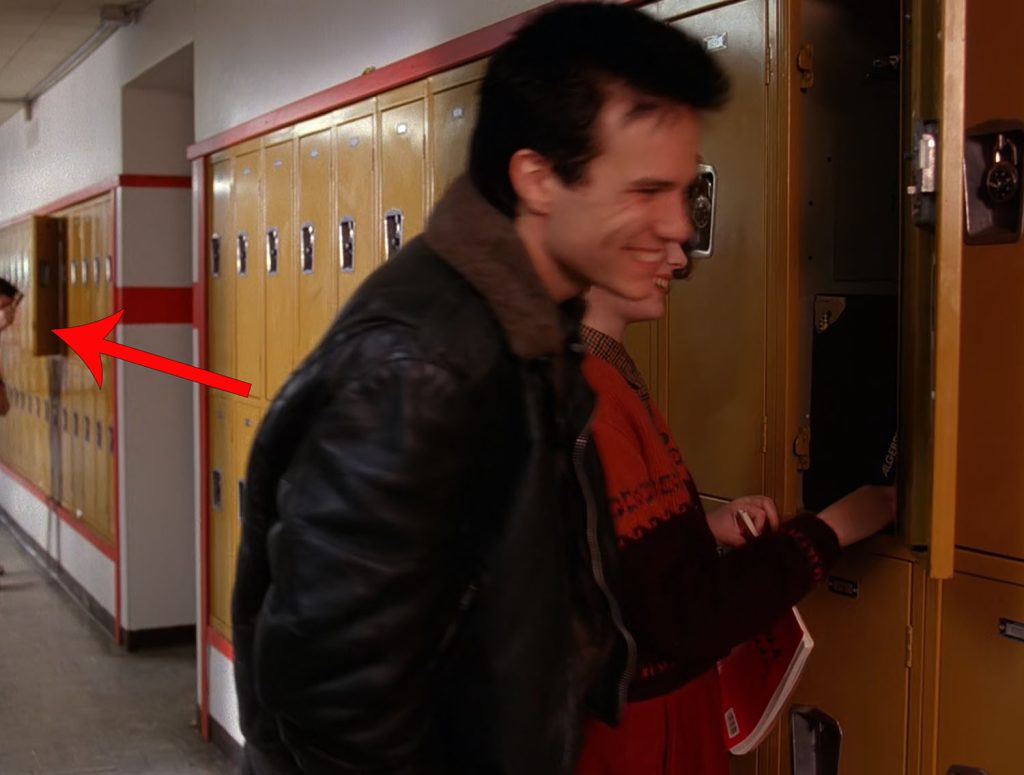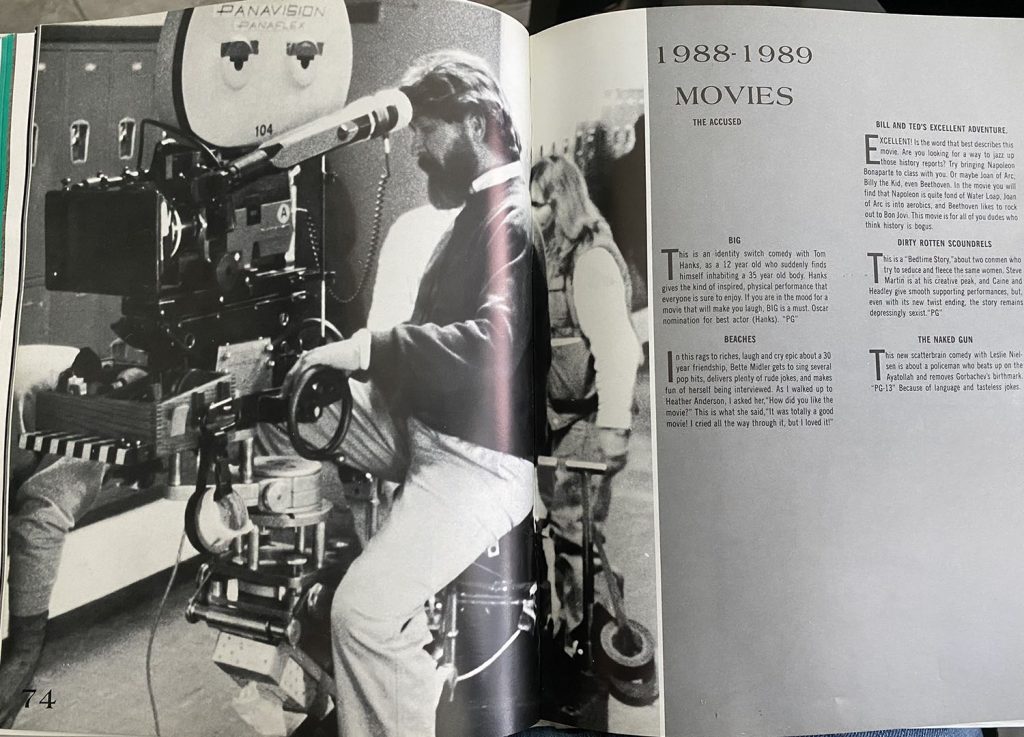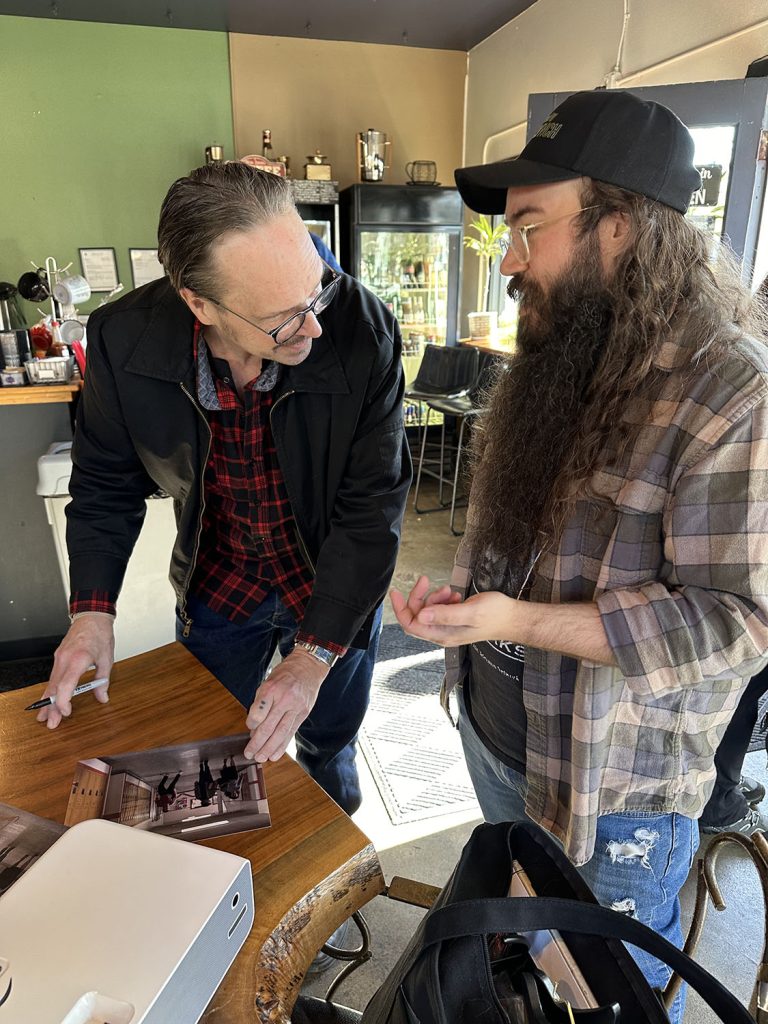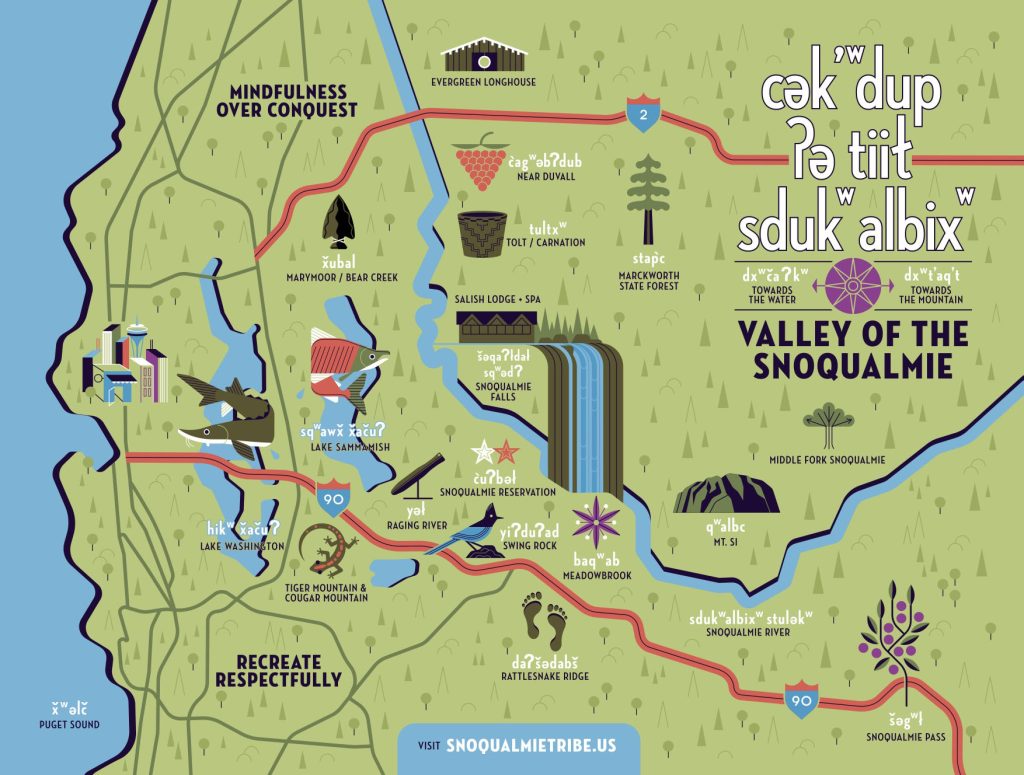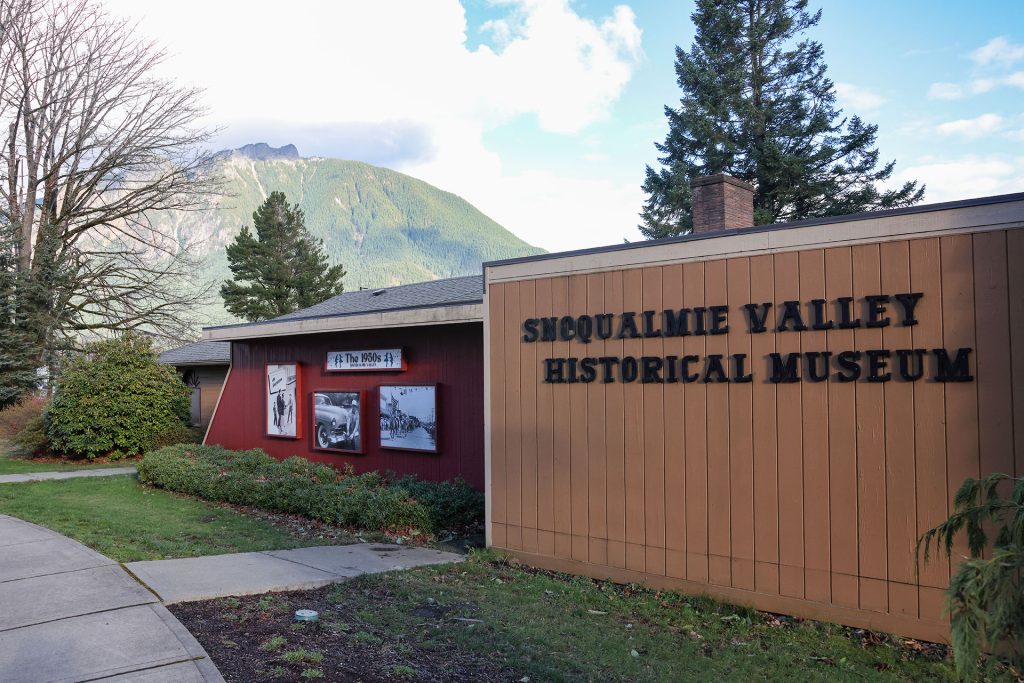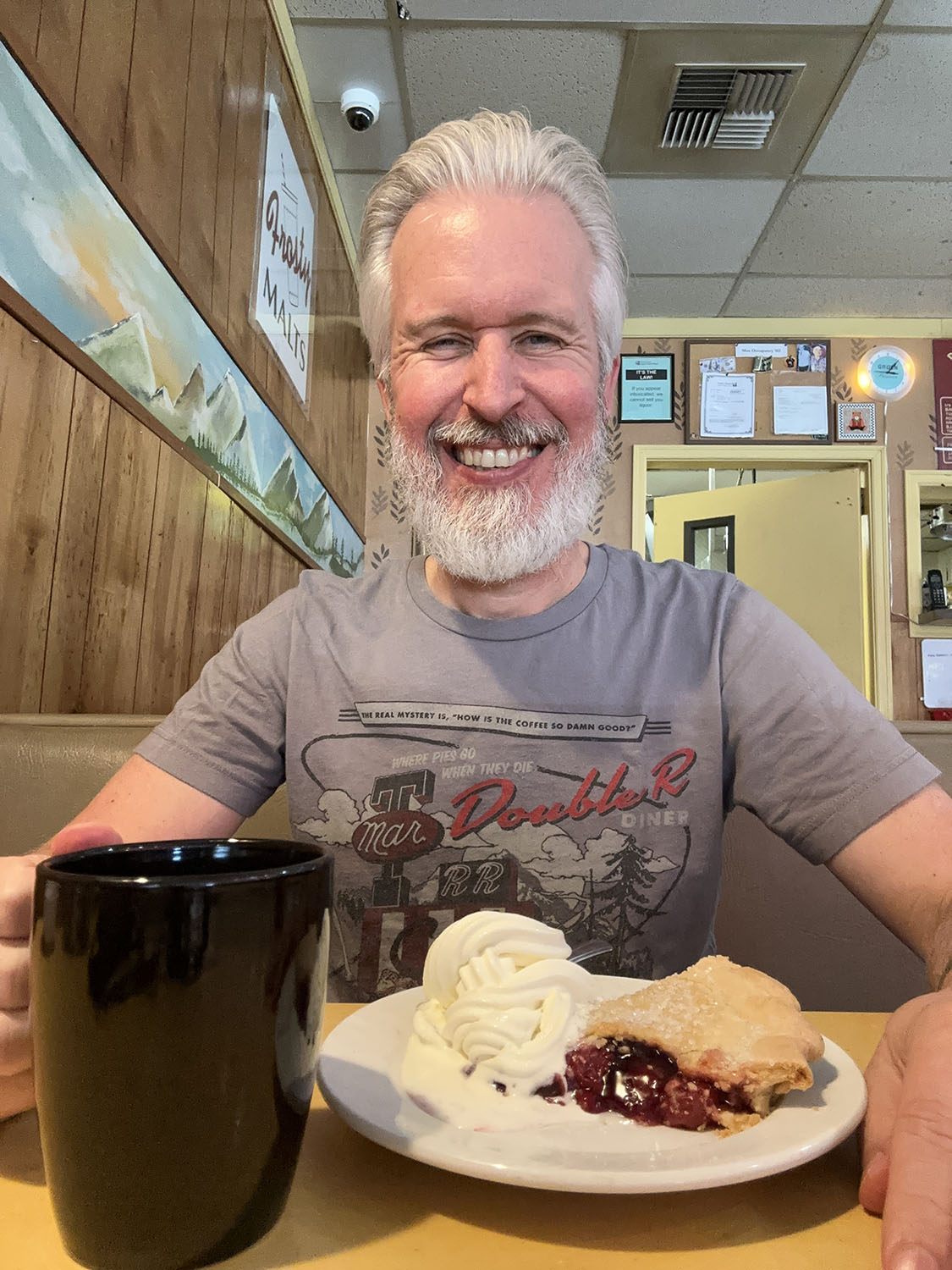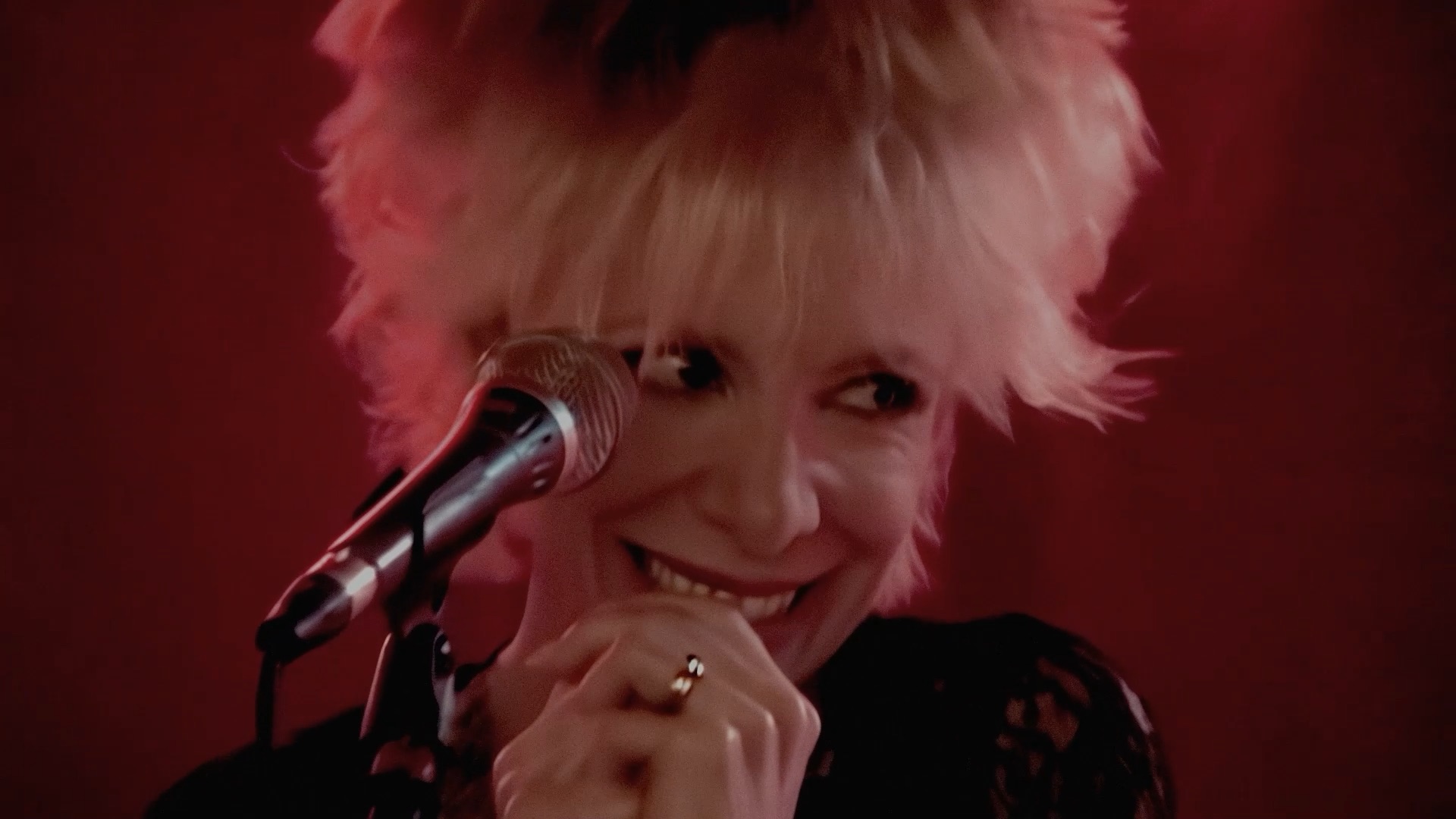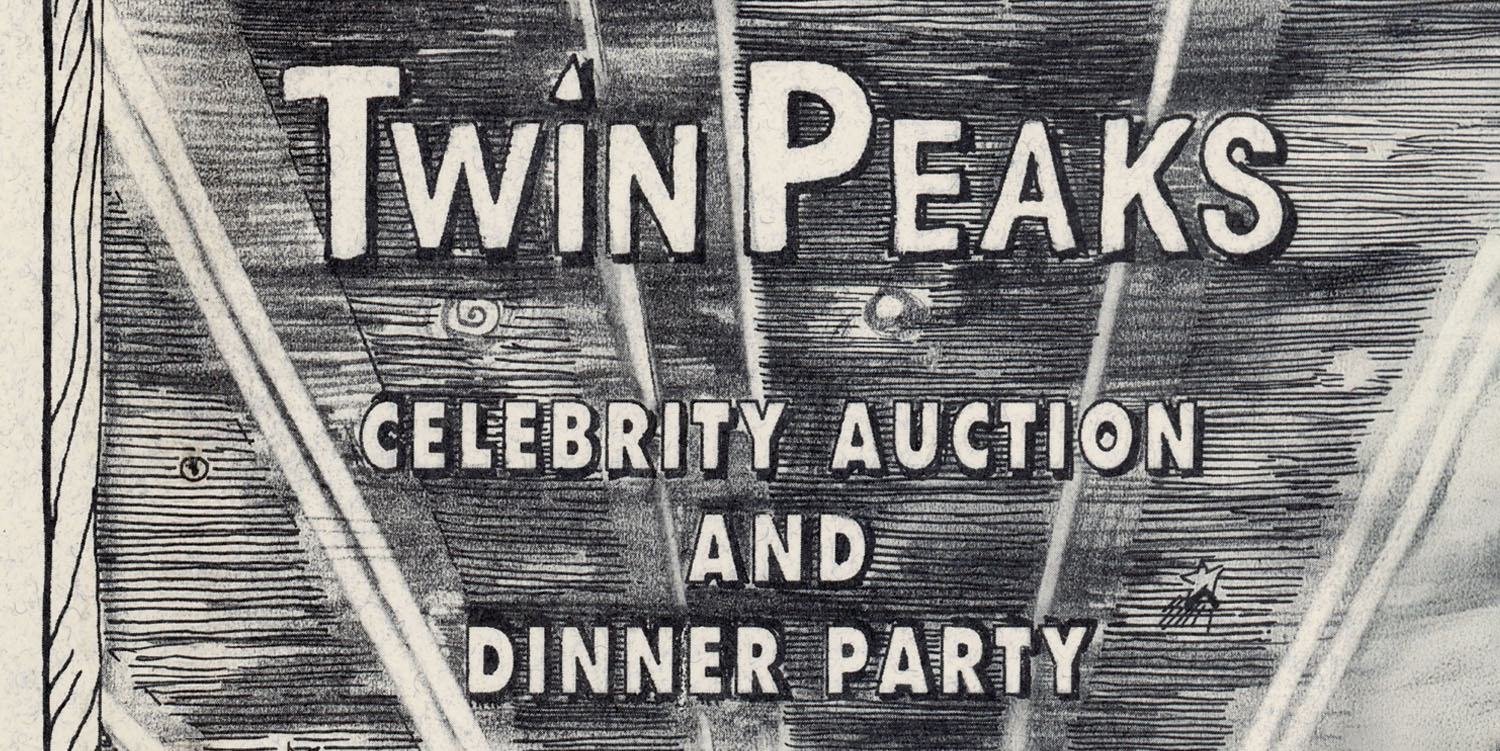To kick of the Real Twin Peaks 2024 event in Snoqualmie Valley, Washington, my fellow Twin Peaks Blog author Vinnie Guidera and I held a panel discussion at Hartwood Cafe in North Bend. For six years, I have researched, identified and visited hundreds of real Twin Peaks locations in Washington and California. David Lynch and Mark Frost’s series used the Snoqualmie Valley and areas near Seattle as settings for all three seasons of the show and the 1992 feature film, Twin Peaks: Fire With Me. Throughout my journey to find all of the film locations, I’ve learned several fun facts that connect the fictional town to the real world as shared in this panel.
HARTWOOD CAFE IN NORTH BEND, WA
The “Did You Know?” panel was originally scheduled for Saturday, February 24. It was moved due to the arrival of a special conversation with Kyle MacLachlan for VIP Ticket holders. While the panel was scheduled as the same time as the film locations bus tour, but we wanted to offer something free for those attendees who opted not to either get a VIP ticket or a separate ticket to the tour.
The panel discussion was held at Hartwood Cafe located at 202 West North Bend Way. During my previous visits to the Valley, this location was once called North Bend Pioneer Coffee and later Vintage Baristas.
For Twin Peak Day 2024, the cafe offered decorative owl-shaped cookies and ones with the Owl Cave symbol.
Small cherry pies were also available which paired well with a delicious cup of hot, black coffee.
They even had a fish IN a percolator. Nice touch!
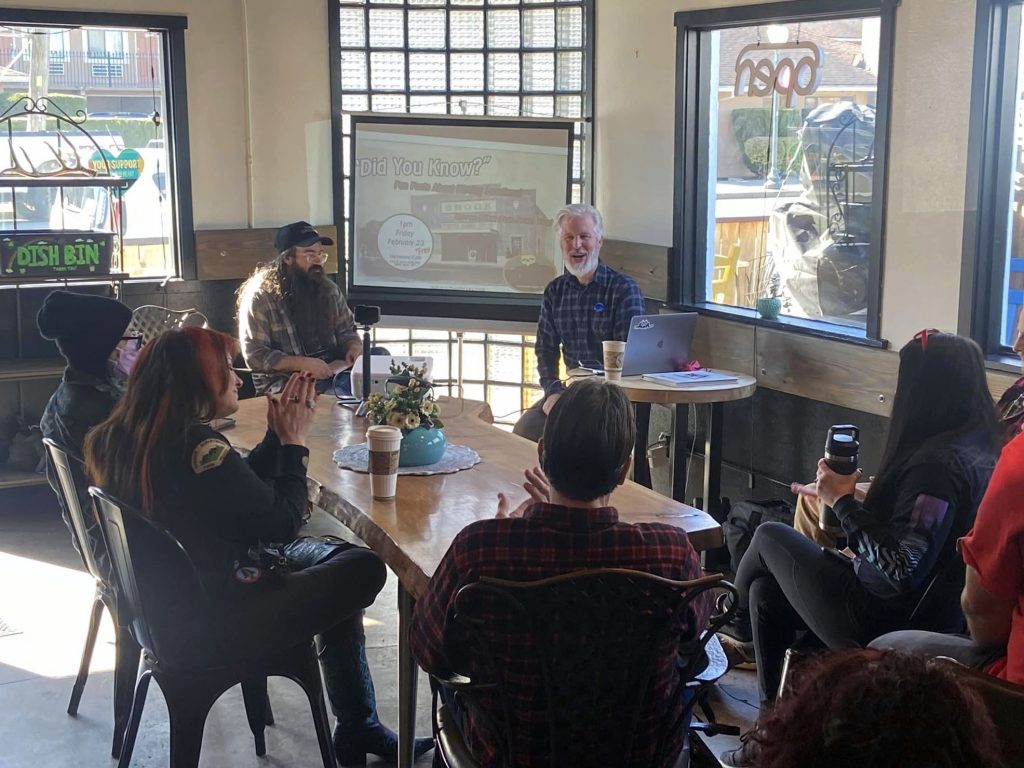
This was the first time presenting this particular panel, so Vinnie and were thrilled at the turn out. My fellow Twin Peaks-fans are the best people – so supportive!
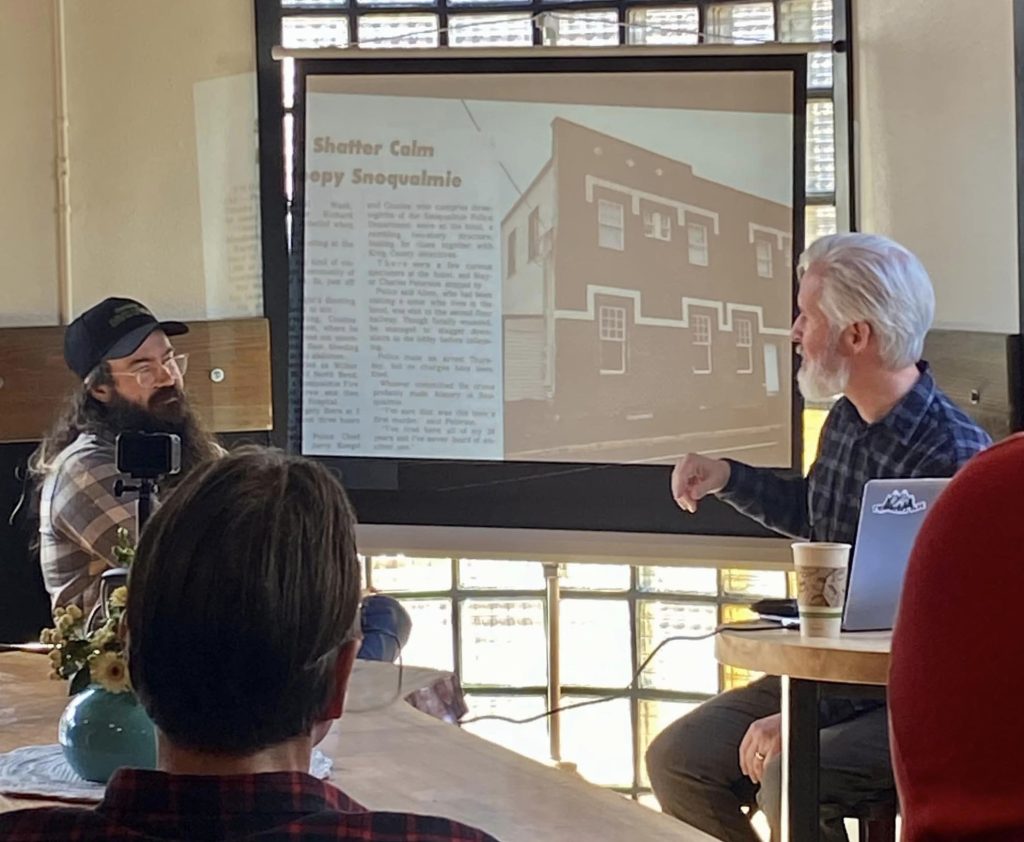
I love this shot that Anita took as it features the unknown mystery guest that wouldn’t be revealed until the end of the presentation.
With that said, here is the text we used to discuss fun facts about Twin Peaks film locations in Washington state.
WELCOME TO TWIN PEAKS SIGN SPOT
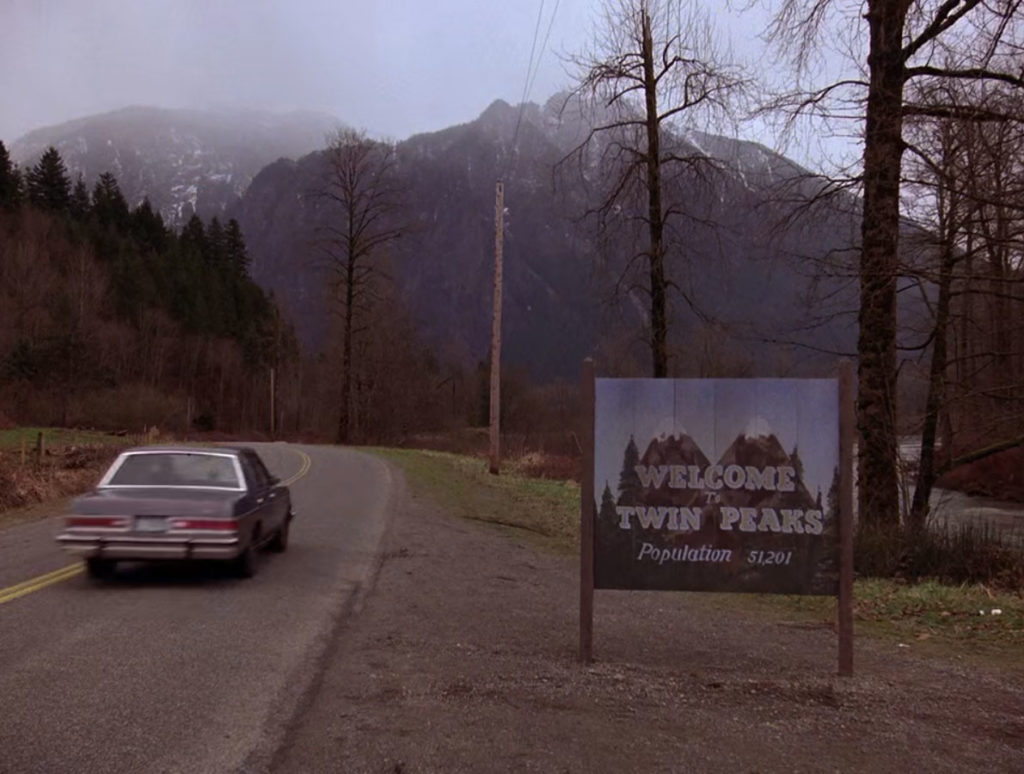
Naturally, the first stop is the Welcome to Twin Peaks sign located around 41433-41699 SE Reinig Road in Snoqualmie. The road is named after Leonard and Margaretha Reinig who moved to the Valley from Seattle in June 1890. Mr. Reinig had a German bakery which sold pastries, candies, bread, cakes, cookies and more. In 1872, he became the first to sell ice cream in Seattle. A fire destroyed his business in 1879 but he rebuilt a few years later in 1881.
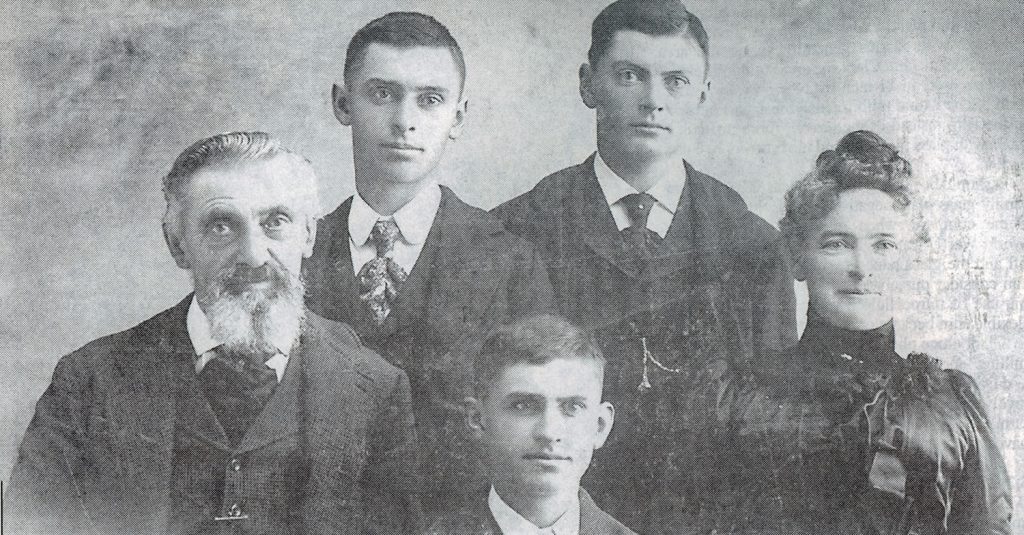
The couple had three sons – Dio, Otto and Eddie. By the end of the decade, the family sought a change of pace. A friend named George Gove invited the Reinigs to visit him in Snoqualmie Valley. The Reinigs fell in love with beauty of the land so much that they purchased 120 acres of land near Gove’s Snoqualmie Hop Ranch.
In 1902, sons Otto and Dio with the help of their father established a general store – Reinig Brother’s Store in Snoqualmie. Otto was also Snoqualmie’s mayor from 1905 to 1915 and later served as postmaster for 31 years. Dio purchased additional farm land next to his father’s farm and helped shape the Upper Valley through his community involvement. Eddie briefly worked at Snoqualmie Falls power plant and later City of Seattle power plant in Cedar Falls. He died tragically in 1912 when he was electrocuted at that plant.
It’s fitting that we enter Twin Peaks on Reinig Road as they were an early family in this region that made it what it is today.
FORT ALDEN TRAILER PARK
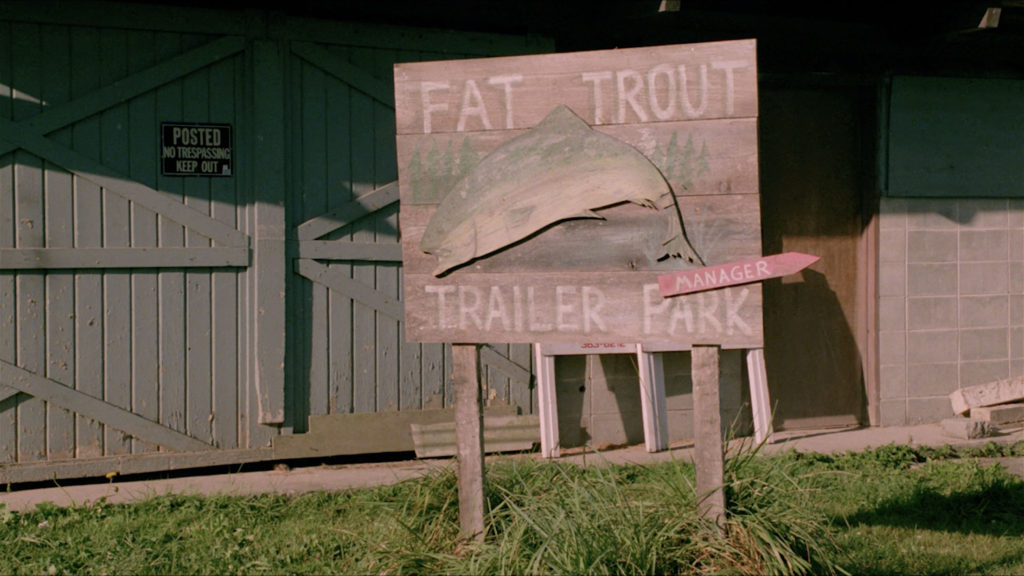
While the Reinig’s were early inhabitants of Snoqualmie, the father of Snoqualmie Valley was Jeremiah Borst. Twenty-eight year old Mr. Borst arrived in the Valley via the Cedar River Pack Trail around 1858. A young adventurer with dreams of verdant farmland, he moved onto the land that would become the Fat Trout Trailer Park in Twin Peaks: Fire Walk With Me.
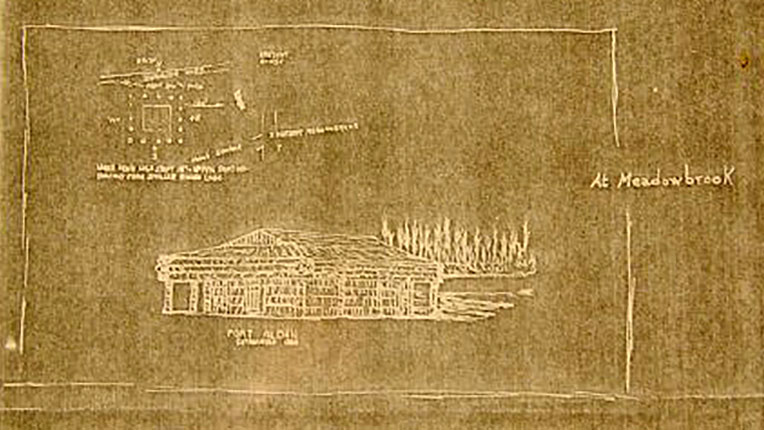
In the mid-1850s, scores of white settlers crossed into Snoqualmie Valley region. Native American tribe leaders, such as Snoqualmie Chief Patkanim, wanted to keep peace between tribes and the ever growing number of settlers. A hastily-drawn Treaty of Point Elliot in 1855 caused tension among the tribes and settlers in the area. Some tribes lashed out by initiating raids on the then small-town of Seattle.
Fearing additional attacks in the Cascade region, Washington State Militia Volunteers built several forts including one log blockhouse in 1856 on the banks of the Snoqualmie River. Named for Captain James Alden, Jr. (a direct descendant of James Alden and Priscilla Mullins from the Mayflower), Fort Alden was down the street from the future town of Meadowbrook. Aside from few minor incidents, skirmishes between Native Americans and white settlers never happened, so Fort Alden was abandoned about a year later. Boorst moved into the structure in 1858.
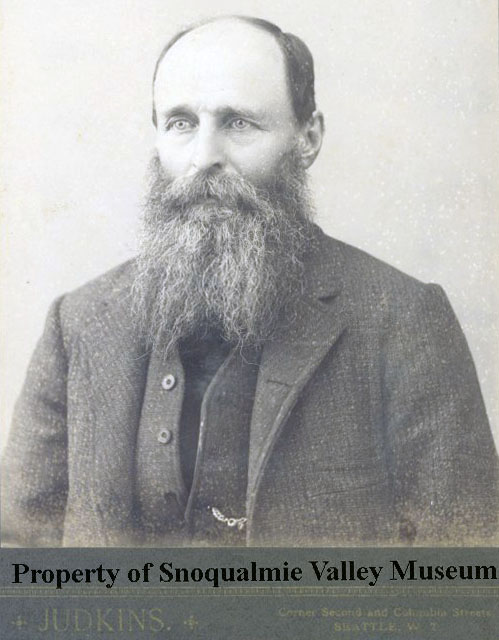
Borst acquired more than 900-acres of land. He even planted an apple orchard on the land where Mt. Si High School (exterior of Twin Peaks High School). Much of his original farming homestead is now found at Meadowbrook Farm. He sold that farm in 1882 to the Hop Growers Association and moved to nearby Tollgate Farm. Borst died on August 10, 1890 at the age of 60 from typhoid fever. He is buried in Fall City cemetery.
NEW FAT TROUT TRAILER PARK
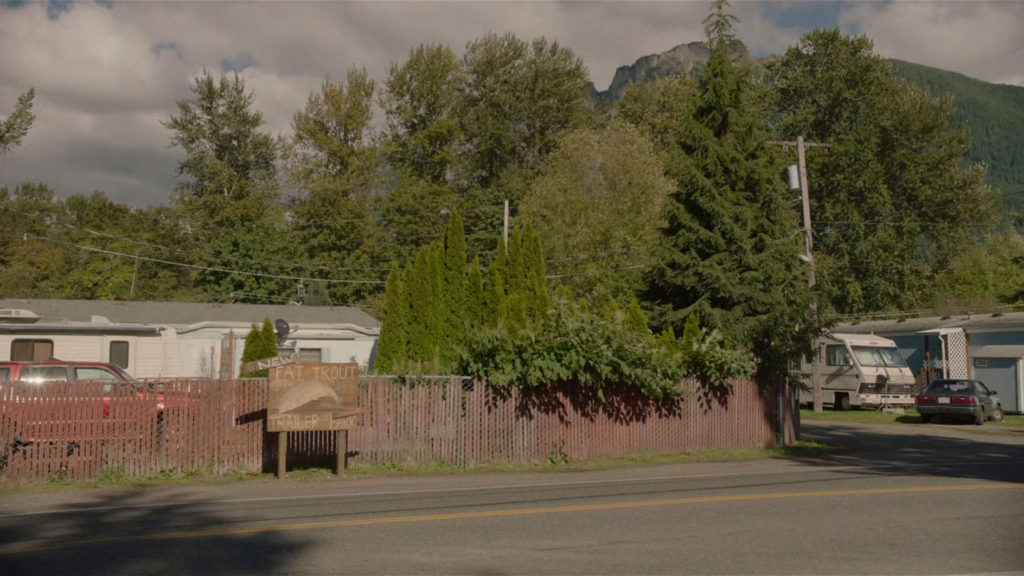
So why wasn’t the original Fat Trout Trailer Park from the 1992 film used for season 3? Flooding.
The adjacent Snoqualmie River, which flows downstream another 2.5 miles to Snoqualmie Falls, crested its banks many times in the 1990s and 2000s. Historic flooding that occurred in January 2009 prompted King County to secure funds from the U.S. Department of Homeland Security’s Federal Emergency Management Agency (FEMA).
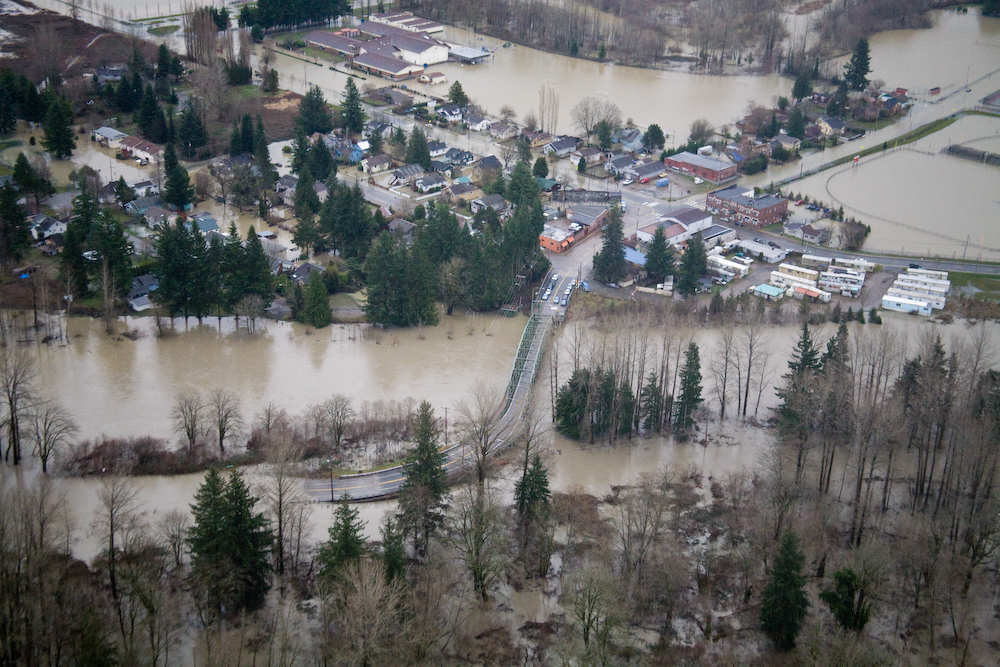
On November 24, 2009, FEMA gave $1.1M in funding to “permanently eliminate the risk to people from flooding by purchasing repetitively flooded and substantially damaged properties, and relocating the current residents to new housing.” The 20 mobile homes and other structures would be demolished, and the area would be converted to open space. By early February 2011, the final structures at Riverside Mobile Home Park were torn down.
For season 3, the crew used the Towne Mobile Home Park located at the curve of Bendigo Boulevard North and Highway 202 in North Bend.
MURDER IN MEADOWBROOK
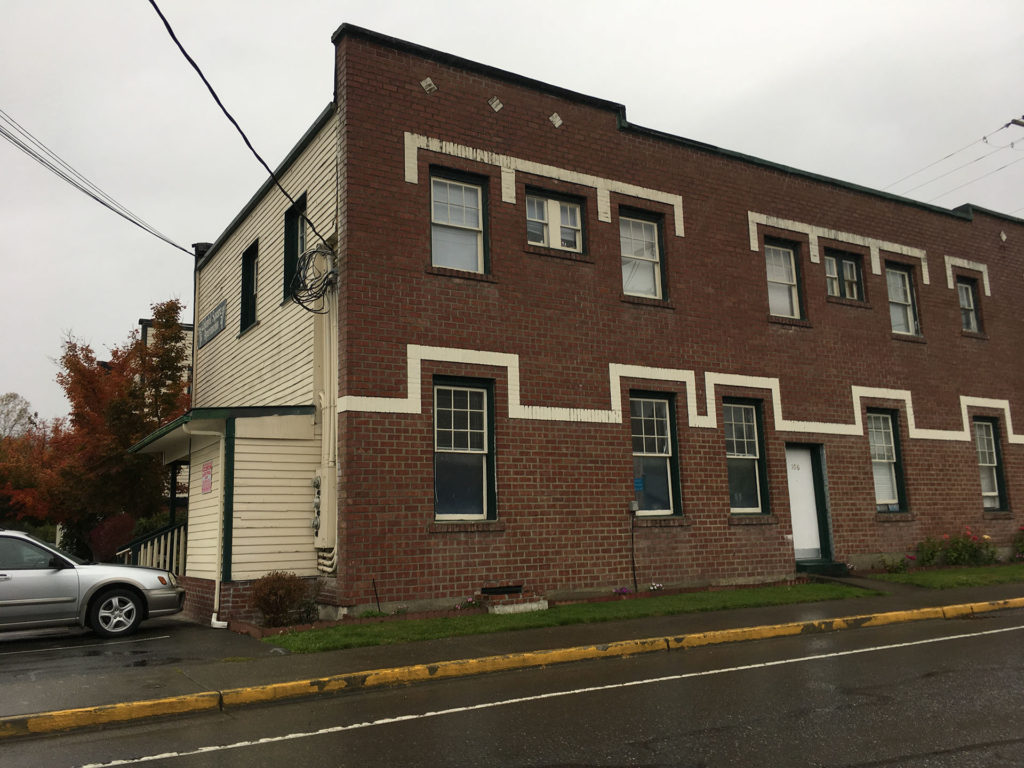
The town of Meadowbrook was established in 1923 as a perfect spot to live for sawmill workers at the nearby Snoqualmie Falls Lumber Company. The town was annexed to Snoqualmie in 1952. Gersten Hayward’s apartment is located in Colonial Square Apartments. The building used to be the Meadowbrook Hotel and it was the location of a murder in the mid-1970s.
On May 5, 1976, Wilbur Presley Allen, 30, was shot in the chest following an altercation at the Meadowbrook Hotel. He was visiting sister who lived on the second floor at the time. He stumbled down to the lobby where he laid unconscious and bleeding until medics and law enforcement arrived. He died three hours later at the Overtake Hospital.
Police arrested and charged Michael Edward Mitchell, 32, of Snoqualmie following an altercation with second-degree murder about seven days later.
Then Snoqualmie Mayor Charles Peterson believed the shooting was the town’s first murder. I found other reports from Dio Reining who said someone was shot in the back on Snoqualmie’s main street around 1909. So it may not have been the first murder but one that rocked the quiet town of Snoqualmie.
Peterson would later be instrumental in creating the Centennial Log pavilion as seen in the opening credits of the Twin Peaks pilot.
NORTH BEND WAS NAMED SNOQUALMIE
Did you know the town of North Bend used to be known as Snoqualmie and the town of Snoqualmie was known as Snoqualmie Falls?
In 1865, Matts Peterson homesteaded land that became North Bend. He moved to the Cascades in 1879 after selling his land to Jeremiah Borst. Borst contacted Will Taylor who had left the area for a mining job in California. In exchange for labor, Borst said Taylor could have the land. He would soon name the town Snoqualmie Prairie but had to change it to Mountain View due to objections by the Seattle, Lake Shore and Eastern Railway.
You see, further down the line, civil engineer Charles Baker had named a town Snoqualmie Falls after the natural wonder nearby – the 268-foot waterfall. He would later develop the underground power plant at Snoqualmie Falls.
The railroad thought the similarly named towns would cause confusion. Sadly, Taylor’s Mountain View didn’t stick either as the United States Postal Service said there was a town with that name in Northwestern Washington state. He ultimately chose North Bend due to the location northward bend of the South and Middle Fork of the Snoqualmie River.
Snoqualmie was incorporated on June 9, 1903 while North Bend was officially incorporated on March 12, 1909.
THE ORIGINAL BENJAMIN HORNE
Charles Baker created the first underground generating station in the world at Snoqualmie Falls. He had a two-story building in downtown Seattle on 2nd Avenue South. It was an electrical substation that would “receive the power generated at the falls and distribute it to the growing fleet of street cars in Seattle and Tacoma and ultimately to businesses and homes.”
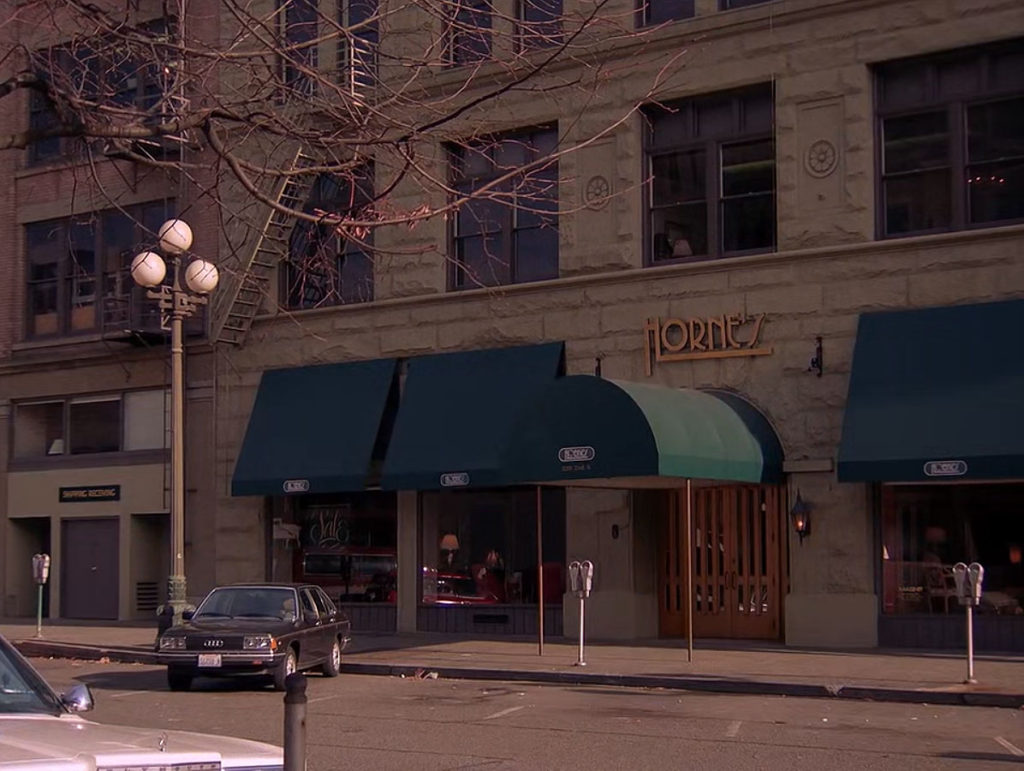
Baker’s Building would later be used as the exterior location for Horne’s Department Store in episodes 1.005 and 1.006. What a wild coincidence!
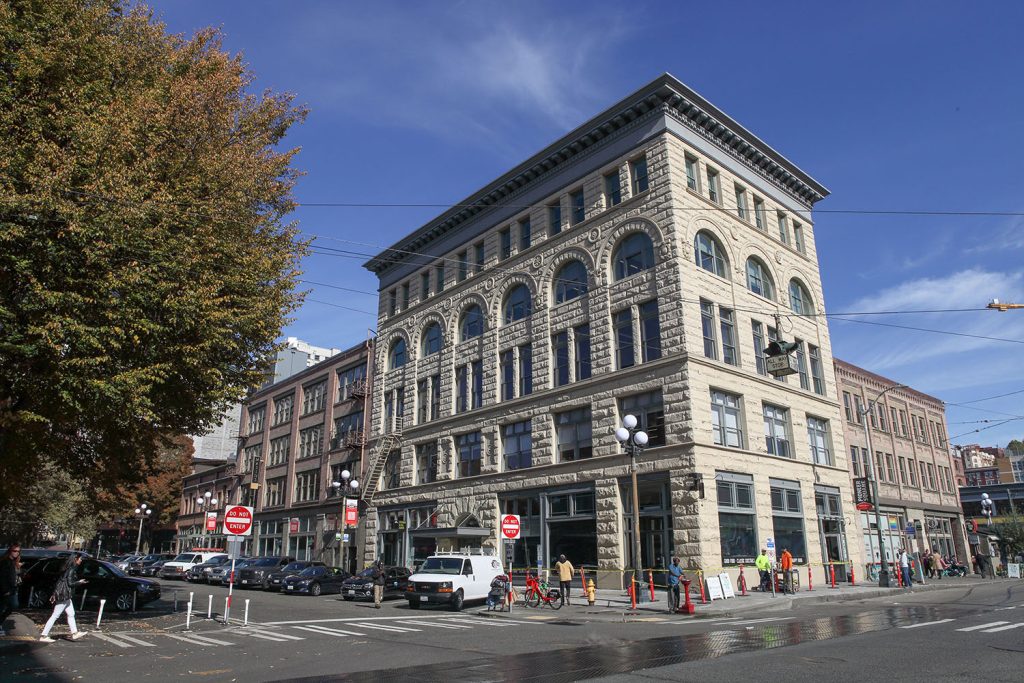
In February 1903, Baker announced that he was turning the substation building into an office building and planned to add three floors. Shortly after his announcement, the Snoqualmie generating plant was destroyed in a fire and Baker’s father died leaving him unable to pay loans for the building and other investments. The building would change hands multiple times throughout the years. A earthquake in 1949 destroyed the top two floors but now they are back.
W.W. WARREN’S MONUMENT IS MISSING
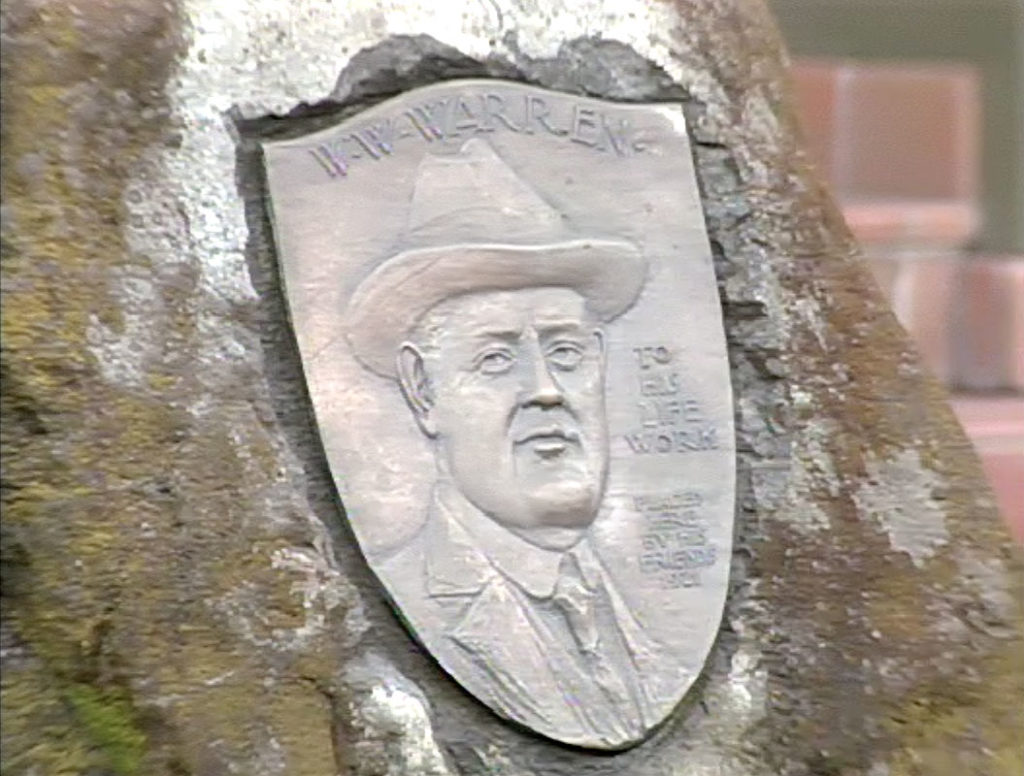
In the first two seasons, there is a stone monument located outside the Twin Peaks Sheriff’s Department. This stone has a bronze likeness and sundial of W.W. Warren, who was the Snoqualmie Falls Lumber Company mill manager when the facility opened in November 1917. This stone was one of four similar memorials in Snoqualmie Valley.It was purchased with small donations from Warren’s workers following his passing in 1921 at the age of 45.
Warren cared deeply for his mill workers, especially when he pushed Weyerhaeuser to build a hospital near the mill. There were some injuries at the sawmill and the closest hospital was in North Bend. They not only built a hospital but they created a new town named Snoqualmie Falls. It had 250 houses, a community hall, schools, a post office, baseball fields, company store, barbershop, hospital, Japanese bunkhouse, hotel and a railroad depot. Low cost electricity was supplied to homes by burning scrap wood in the mill.
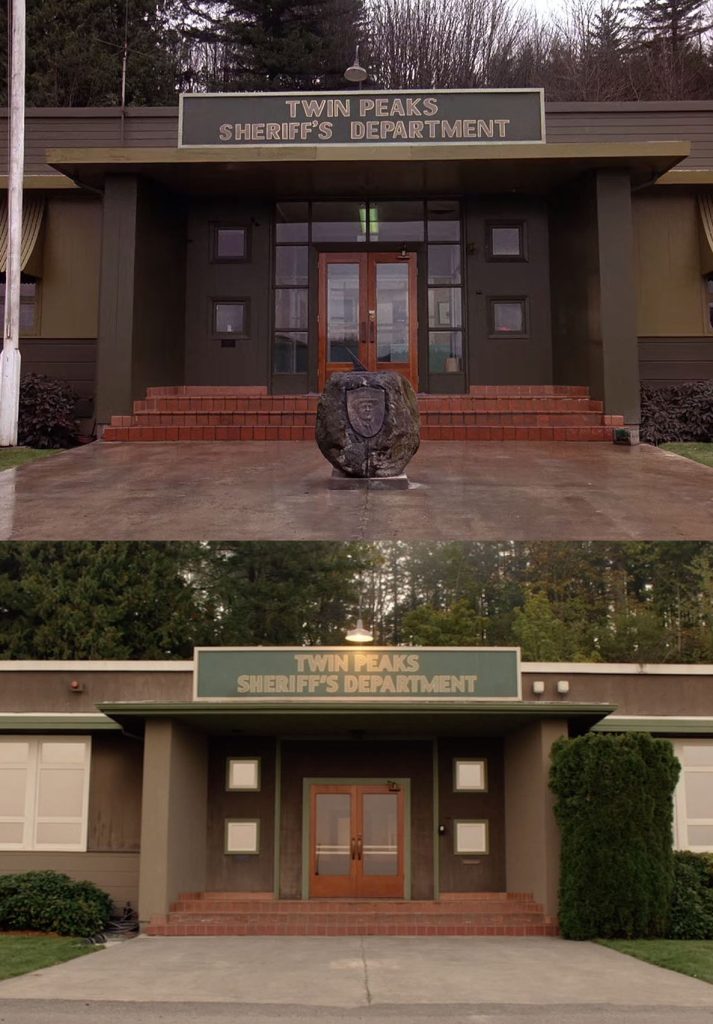
You may notice in Season 3 that the stone monument is missing. Sadly, no one knows where it went.
UNDER THE SYCAMORE TREES
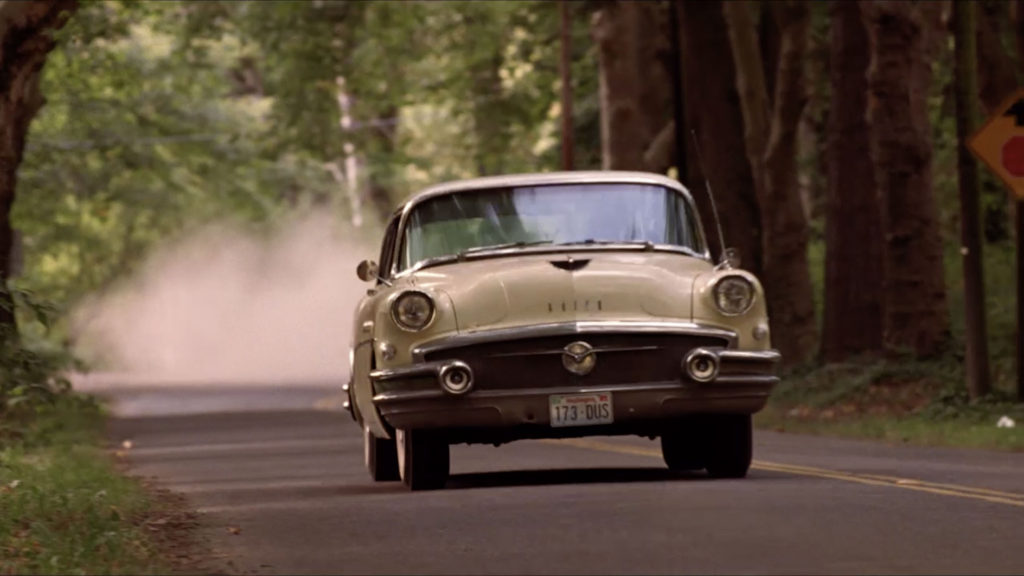
Laura Palmer drives through the last vestiges of Snoqualmie Falls when she speeds towards Harold Smith’s place in Twin Peaks: Fire Walk With Me. In 1929, Weyerhaeuser planted a row of Sycamore trees in front of the homes that flanked Reinig Road as part of a Snoqualmie Falls beautification program. As business at the mill declined, the company decided to close the town. In 1958, 90 houses were moved from the town to new sites, and most of the other structures were demolished. You can still see remnants of the community under these sycamore trees.
THE YELLOW LIGHT STILL MEANS SLOW DOWN
The Sunset Highway was the first automobile route across the Cascades. The road passes directly through North Bend which made the town the final stop before reaching Snoqualmie Pass. Before I-90 opened, thousands of motorists drove through North Bend on their way to the mountains. This explains why some roadside motels and cafes, such as Twede’s Cafe or the Mount Si Motel, popped up in the town.
Before 1965, traffic at the corner of Bendigo Boulevard and North Bend Way was regulated by a flashing light. The combination of thousands of motorist and just a flashing light caused incredibly long waits and accidents. To regulate traffic through the town, a traffic light was installed and turned on at 3:00 p.m. on July 1, 1965. This is the same intersection featured in the Twin Peaks pilot episode and that footage was captured during the first day of principle photography on February 21, 1989.
AGENTS DESMOND AND STANLEY ON THE SUNSET HIGHWAY
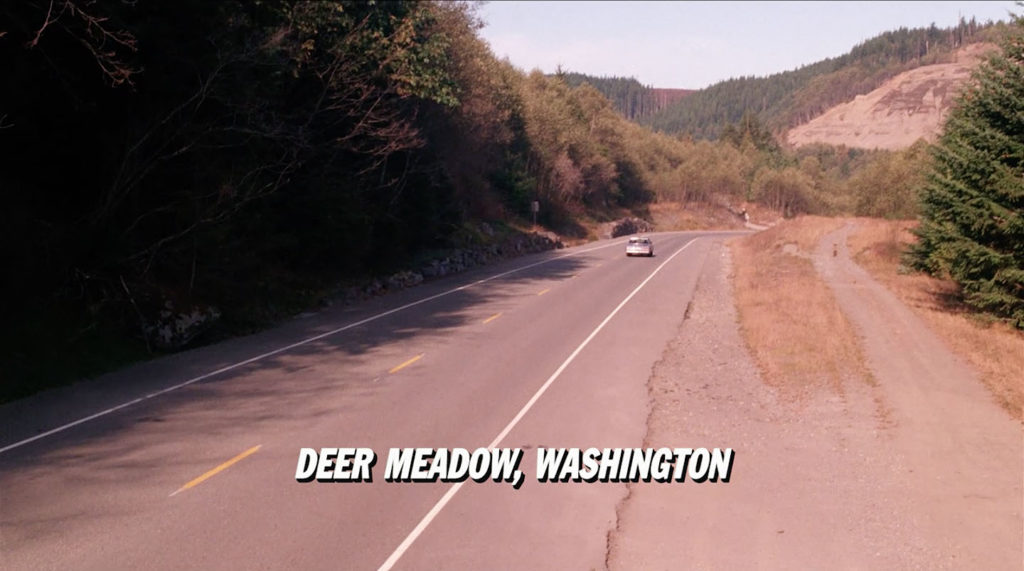
Agents Desmond and Stanley also drive on the Sunset Highway while on their way to Deer Meadow, Washington in Twin Peaks: Fire Walk With Me. This road off of I-90 is used to access Olallie State Park, home to numerous Twin Peaks film locations.
THE OTHER BIG ED’S GAS FARM
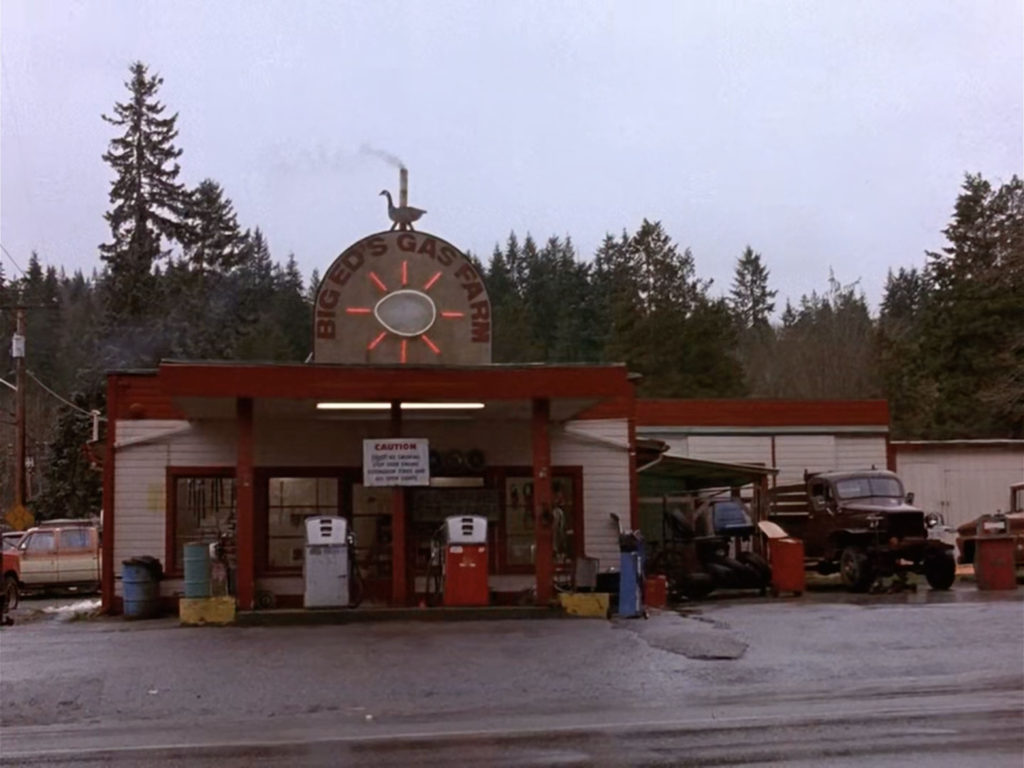
The structure used for Big Ed’s Gas Farm in the Twin Peaks pilot is located at 8606 Preston-Fall City Rd SE in Preston, WA and was originally known as Butchy’s Service Station & Grocery Store, owned and operated by Lawrence “Butch” Fredeen and his wife Agnes for nearly forty years. The Fredeens built the storefront in 1940 when the construction of Highway 10 forced them to relocate their business.
“We were given $800 and a month to move,” Butch told the Issaquah Press in 1987. A variety of retailers have since occupied the space, including a stone and tile store, a windsock store, and a hydroponics shop. A business called Balloon Designers occupies the building as of this writing.
In addition to constructing the storefront, the Fredeens built and lived in the house across the street, which was used as the Hurleys’ home in the pilot episode. The wartime economy made for a drawn out construction and their home was not completed until 1941, almost a year after the store was built.
In any case Butch and Agnes may well have shouted across the street to one another just like Ed and Nadine!
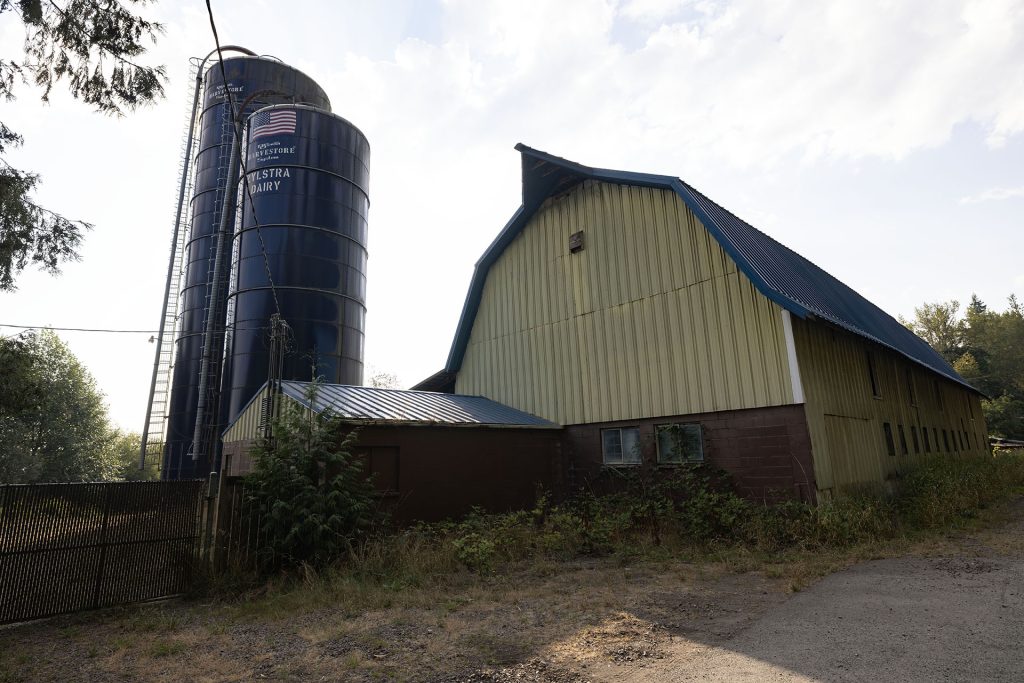
According to location scouting records, the crew looked at the Zysltra Dairy Farm located on 203 past Duvall, Washington. I don’t have many details as to why this particular location but it is an actual farm which maybe makes more sense for it to be called a “Gas Farm.” Paul Zlystra and his wife Betty were dairy farmers in Duvall for 40 years. In 1971, the Zylstra’s were chosen King County’s Dairy Family of the Year.
STUDENTS AT MOUNT SI HIGH SCHOOL
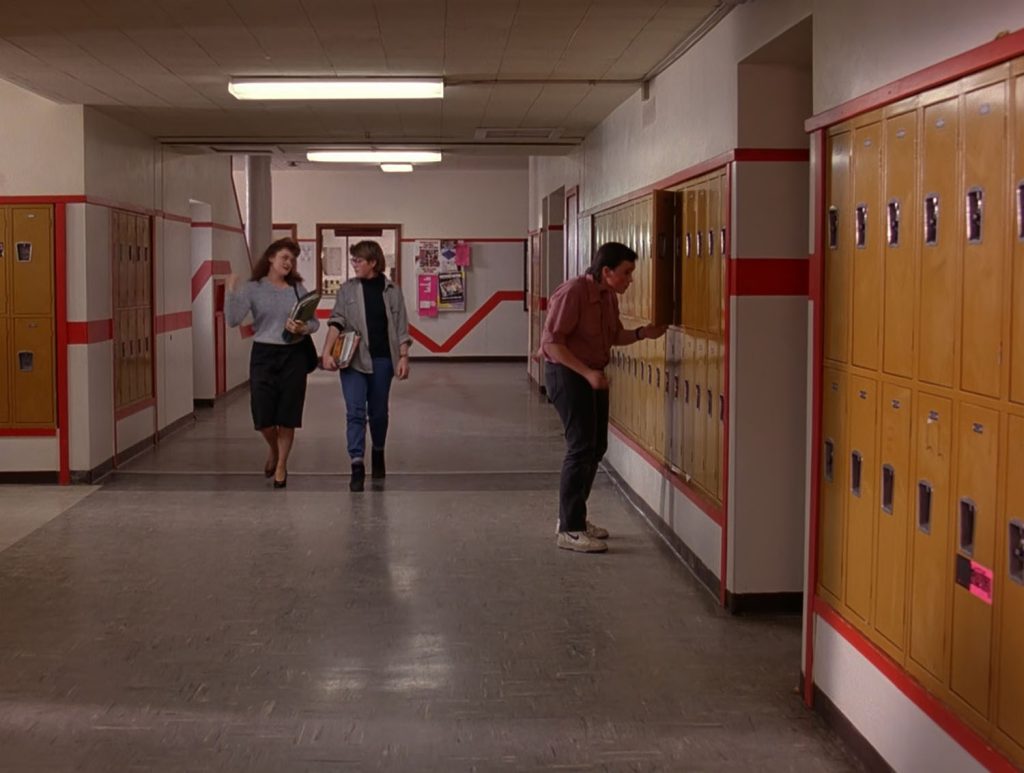
For the Twin Peaks High School scenes shot at Mount Si High School in Snoqualmie, the crew used drama club students for several scenes.
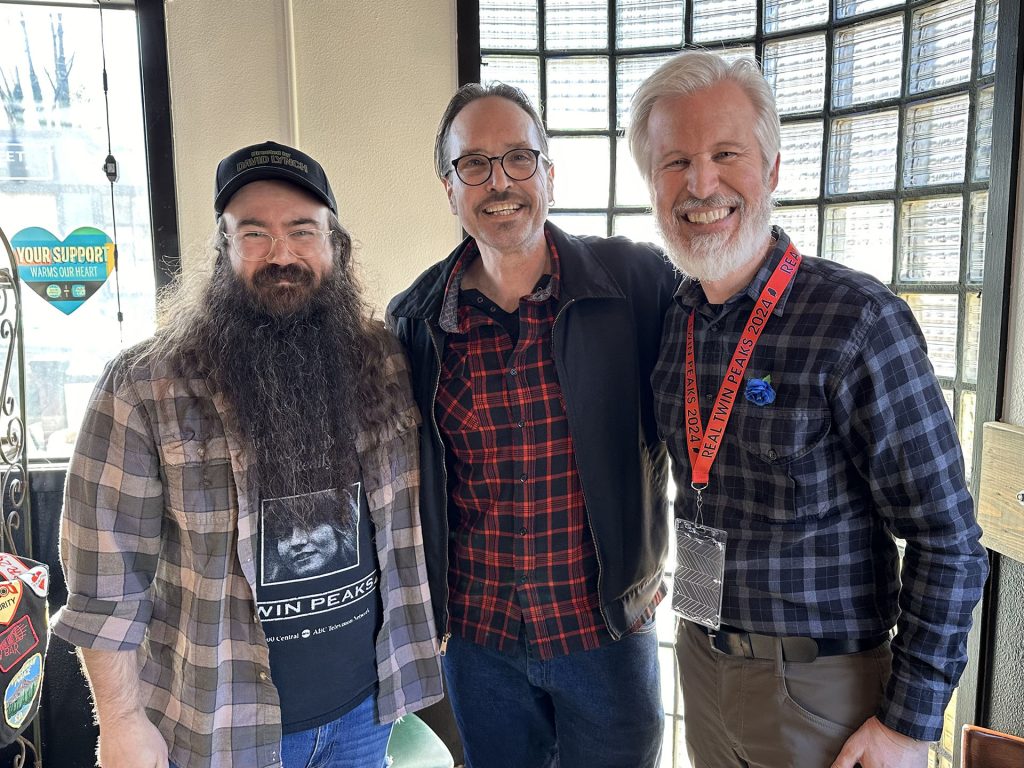
One of those students was a junior in the drama club named Jim Pennington. He played the part of the kid who did the sideward moonwalk into the classroom. Thank you to Lourdita Teresa who found Jim and Aaron Cohen for connecting me to him. What a treat!
Jim shared that scenes were captured at Mount Si High School when the school was closed due to a snow storm. Seniors were invited to be in the scenes but because he was in drama club, he participated too.
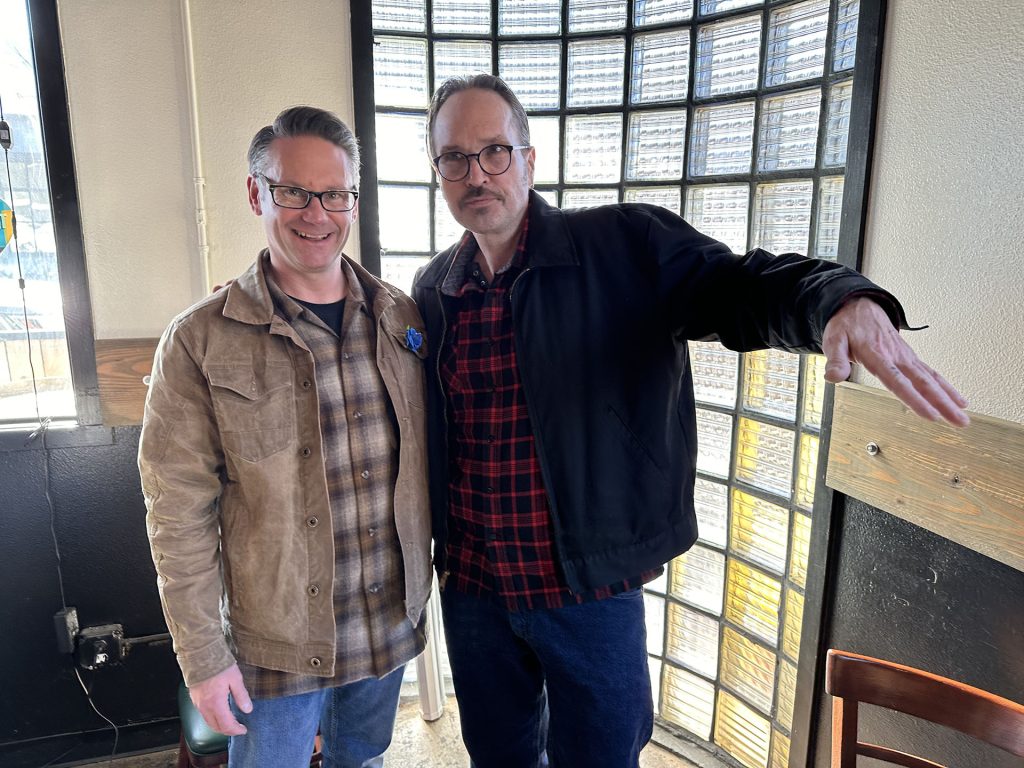
At some point the casting director told the group of students that the director had something to ask. David Lynch then poked his head in the classroom and said, “Can anybody do a moonwalk?” Jim was into breakdancing at the time, poppin’ and lockin’, and the moonwalk was one of his specialties. But Jim felt didn’t have the right shoes. There was one other guy who did the moonwalk but Lynch asked for another option.
“Anybody else?,” asked Lynch.
“I can do a sideways moonwalk,” Jim responded.
“Sideways moonwalk? What does that look like?,” continued Lynch.
Jim did a quick example by the locker and Lynch loved it – “Let’s do it!”
He did a quick rehearsal which was followed with some minor direction from Lynch – “Can you fix your hair in the mirror or something?”
Jim did one take, spun around and Lynch asked if that was how he would do it as Jim left the locker door open. He ended up doing four takes for the shot. All of the students were in the class room watching Jim as he did the moonwalk.
Jim also remembered Ron Garcia and the giant Panavision Panaflex camera. An uncredited image of Ron at work appears in the Mount Si High School yearbook from 1989.
James Marshall talked with Jim in between takes and he remembers Sherilyn Fenn giving him positive encouragement after the shot was captured.
Vinnie and I were over the moon that Jim could attend the talk. It was a perfect way to kick off the Real Twin Peaks 2024 Event.
This was just a handful of fun facts about Twin Peaks film locations in Washington state. Stay tuned for more or checkout the Twin Peaks Film Locations page for in-depth look at hundreds of sites.
ACKNOWLEDGEMENTS
Thank you to everyone who attended, Hartwood Cafe for hosting us, and the Snoqualmie Valley Chamber of Commerce and North Bend Downtown Foundation for sponsoring the weekend event.
I want to acknowledge the Snoqualmie Tribe who existed on land in Snoqualmie Valley before settlers arrive in the mid-1800s. Much of the land throughout this region is sacred to the Snoqualmie people, so please remember that when exploring the beautiful Valley. Stop by the newly opened visitors center at Snoqualmie Falls to learn more about how the tribe continues to protect and respect this land.
I also wanted to thank the Snoqualmie Valley Historical Museum and leadership of Christy Lake and her incredible staff. The museum is contains a wealth of information about Snoqualmie Valley. They have introduced new Twin Peaks and 1950s-inspired exhibits for Real Twin Peaks 2024 event weekend. They are open six days a week from 1:00 – 5:00 p.m., excluding Wednesday. If you like this kind of history, I hope you will visit them or consider contributing to the museum so they can continue preserving stories from a place we all love.
Discover more from TWIN PEAKS BLOG
Subscribe to get the latest posts sent to your email.

